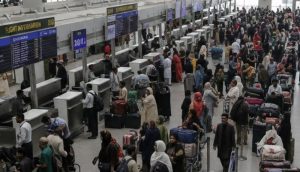COPENHAGEN – The Danish government has recently enacted a new law mandating individuals receiving social support benefits to engage in internships and employment programs for 37 hours per week.
The legislation applies to residents with fewer than nine years of residency in the country or those with less than 2.5 years of full-time employment in the last decade.
Regarding the impact, the law primarily affects approximately 22,000 people, particularly refugees and family-reunified third-country nationals, with special attention given to women within this demographic.
Currently, this group of residents is eligible for the lower “return and self-sufficiency benefit,” which amounts to half of the typical allowance provided to unemployed citizens without private insurance. This equates to roughly 800 EUR per month before tax for a single person without children.
This new legislation coincides with Denmark reaching a record high in the number of employed citizens, totaling 3 million out of a population of 5.8 million. Employment rates for women in Denmark nearly parallel those of men, and the majority of children begin daycare at the age of 1.
Like other European countries, Economic analyses indicate Denmark’s pressing need for skilled laborers and a potential surplus of unskilled workers in the near future.
Ministers of integration and labor emphasized that the aim of the law is to communicate that “when coming to Denmark, you must work.”
Interestingly, the law’s own text indicates an annual cost of 170 million DKR (22.8 million EUR) for the country. Municipalities, tasked with ensuring activities are accessible to the target group, have voiced criticisms, as have unions, underscoring studies that highlight language proficiency and low competencies as primary obstacles for migrants seeking entry into the Danish labor market.
Denmark, located in Northern Europe, is a Scandinavian country known for its rich history, modern society, and picturesque landscapes. With a population of approximately 5.8 million people, it encompasses a blend of urban centers, charming villages, and coastal beauty. Copenhagen, the capital, is a vibrant hub of culture and innovation.
Denmark’s alluring landscapes include rolling countryside, serene lakes, and a stunning coastline. Annually, Denmark welcomes a notable influx of visitors, with millions drawn to its cultural attractions, historic sites, and natural wonders. Its inviting atmosphere and diverse offerings make it a popular destination for tourists seeking a blend of tradition and modernity.














